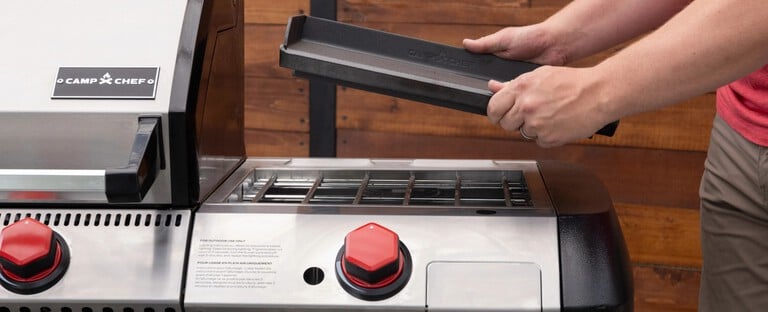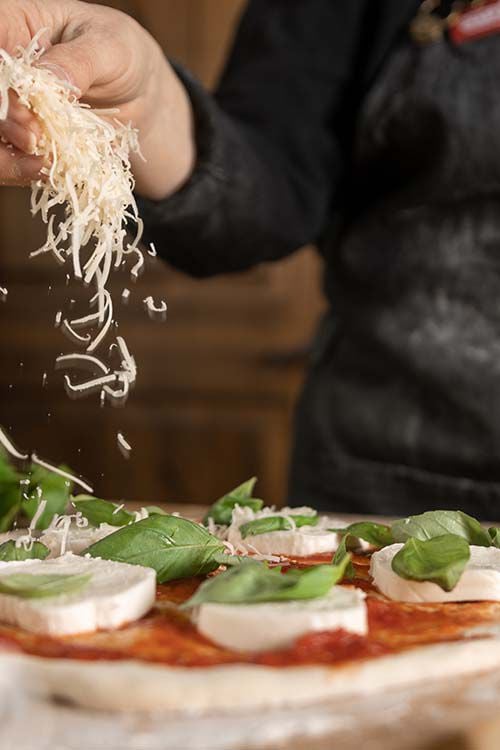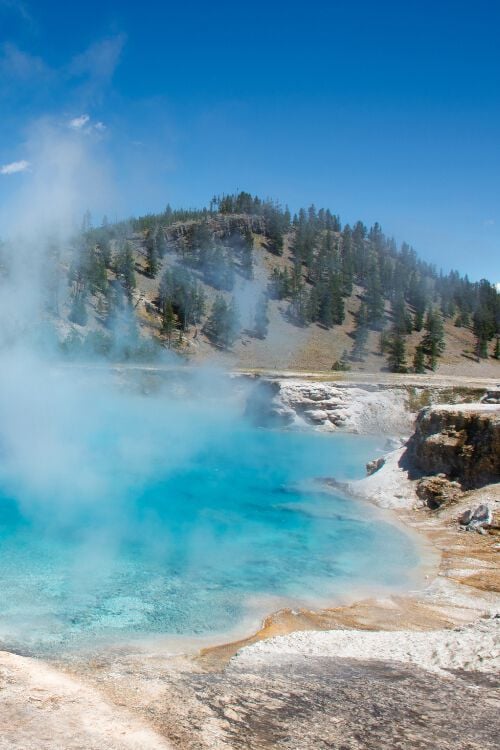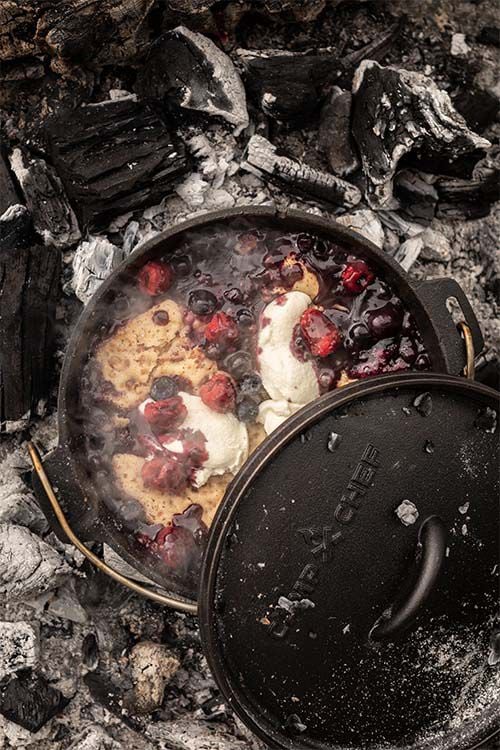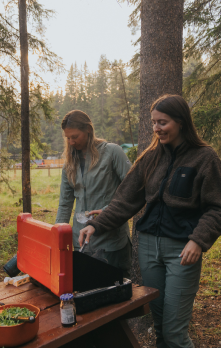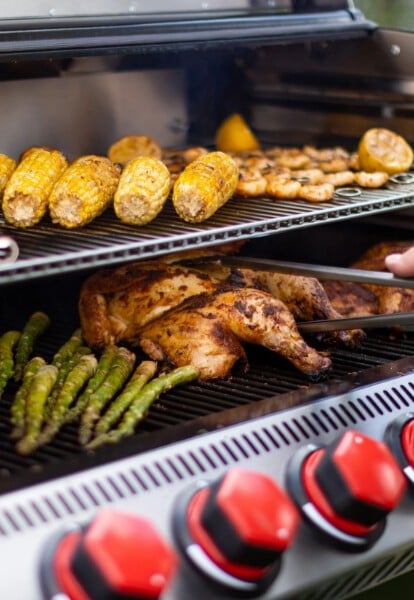
HOW TO CLEAN YOUR APEX Hybrid Pellet GRILL
We cannot emphasize enough how important regularly cleaning your Apex pellet grill is. There are a number of reasons why your grill gets dirty. Between ash/creosote from the pellets and grease from your food, a lot goes down under the hood. If you elect to not clean your grill regularly it can lead to airflow problems and grease fires which can quickly escalate to house fires.
First and foremost, it is important to read your included owner's manual. If you accidentally tossed yours, navigate to your pellet grill's product page and to find a PDF version in the Downloads section near the Features and Specifications. Many can be found on this page.
After every use, empty your Ash Cleanout. This is a knob found on the side of your pellet grill. Not emptying the Ash Clean out will result in ash accumulation and restricted airflow, causing temperature swings and flameouts. As the pellet grill runs like a convention oven with a fan, you may start to notice ash settling on the bottom of your chamber and even on your food. This hopefully goes without saying, but it's a good idea to spot clean the lid, side shelf, and cook racks between cooks.
A deep clean really depends on how often you use your grill and what kind of cooking you do. If you often use foil pans, casserole dishes, cast iron, etc. and your drip tray doesn't get much action in the way of buildup grease, you can hold out a little longer than some. However, if you often do long smokes, and rarely smoke with cookware, you will have to clean more frequently. Generally speaking, after 50 hours of smoking, it's time for a deep clean. It's easiest to start from the top, down.
INTERIOR
⚠Make sure your grill is completely cool and unplug it from its power source before performing any cleaning. We suggest working in the order of parts listed below. It's easiest to work top to bottom and leave the vacuuming to the end of the internal cleaning process.
Empty the pellet hopper to prevent your pellets from getting wet or coming into contact with cleaning substances. Open the lid and remove the cooking grate, any extra racks, drip tray, and heat diffuser plate from inside the grill. Pay attention to how these pieces are installed (or even take a picture) so you’ll have an easier time reassembling your grill. Use a wet/dry vacuum with a hose attachment to remove loose ash and debris. Look for places inside your grill where grease has built up. Use something with a flat edge (a paint stick, pan scraper, etc.) to dislodge and remove it. Use hot, soapy water and a rag to wash the interior of your grill, as well as each piece you pulled out. Repeat the process until most of the grease buildup is gone. With a rag, rinse thoroughly if you used soapy water and allow everything to dry. NEVER cover slots, holes, or passages in the grill bottom or cover an entire rack with material such as aluminum foil. Doing so blocks air flow through the grill and may cause carbon monoxide poisoning. Aluminum foil linings may trap heat causing a fire hazard.
Tip: Use our grease bucket liners to make cleaning your grease bucket a snap.
Top Nickel Plated Rack
These are dishwasher safe. If you'd rather not run it through the family dishwasher, remove them from the grill and scrape any burnt-on food bits into a trash can. Fill a large storage tub with warm water and a mild dish soap. Let them soak for at least 30 minutes while you clean other grill parts.
Bottom Porcelain Rack
These are also dishwasher safe if you choose. Remove them from the grill and scrape any burnt-on food bits into a trash can. Fill a large storage tub with warm water and a mild dish soap. Let them soak for at least 30 minutes while you clean other grill parts.
Inside of the Lid
If you have a stainless-steel pellet grill then you will notice a considerable color difference after a few cooks. The inside of your grill lid will be black, and this is completely normal. In fact, many people don't think twice about it. But if appearance is on the top of your list we have a few chemical tricks to restoring your grill to its former glory (as much as it could be.).
- Cleaner/Degreaser, LA Awesome
- Glass/Ceramic Cooktop Cleaner, Cerama Bryte
Note: Let the smoker run for about 30-60 minutes on 350℉ to burn off any chemicals.
APEX Drip Tray (louvered vs. un-louvered)
This is different than our other pellet grills. The drip tray is accessible via the outside of the grill versus having to remove the inside grill grates. The drip tray must always be cleaned prior to using the interior grill burners. Excessive buildup of grease and creosote may result in a grease fire. If a grease fire does occur, turn off the grill using the main power switch and close the lid. Leave the lid closed until the fire extinguishes itself. If an uncontrolled fire does occur, immediately call the local fire department. Be sure that the grill is completely cool before removing the tray for scraping and washing.
Remove the drip tray from the pellet grill, take your scraper tool, and scrape the burnt-on drippings into the trash can. Make sure to get all the crevasses, especially the grease channel. This area tends to get the most grease build up.
You can go through with your vinegar/water cleaner and give the drip dray a good wipe off. Replace the drip tray.
Back Vents
Cleaning the vents doesn't need to happen as often. You can wait until racking up around 200 hours of smoking. Just keep an eye on it. Give the vent slats in the inside of the grill a good scrape. Creosote tends to build up on this area. If you haven't done this in a while don't be surprised if the slats are nearly closed shut. You'll want to make sure they are free of debris.
Internal Temperature Probe
Often times if your temperature does not read accurately it's because too much smoke has been built up on the probe. You'll want to clean it every few cooks. It's located in the center of the cooking chamber and is about the size of a pencil. The goal is to keep it looking silver. To do this, use your vinegar/water solution mix and a soft steel wool ball.
Do not soak this with liquid. Be very gentle as this rod can be extremely finicky. Take your soft steel wool ball and carefully rub the thermometer free of bits and build up.
Bottom of Chamber
The last step after you've scraped all the internal parts that have visible build-up is to go through the bottom of the chamber with a shop vac and vacuum the debris up. This will be a mix of ash and food. If you'd like, you can give the internal chamber a quick wipe down with a paper towel or an old rag. An optional cleaning trick is to take compressed air to spray in the nooks.
EXTERIOR
⚠Make sure your grill is completely cool and unplug it from its power source before performing any cleaning.
Materials:
- Paper towel or old rags
- Microfiber towel
- Water and vinegar cleaner, equal parts
Hopper
The inside of your hopper and auger tube get dusty after processing the hardwood pellets. It's a good idea to clean out the entire hopper every 100 hours of smoking. The APEX comes standard with a pellet purge or pellet dump. Before performing this task make sure your grill is completely cooled and shut off. Grab a bag or bucket and place on the back side of your hopper under the chute and release the pellets. You may want to remove the honeycomb hopper protector to make sure your entire hopper is pellet free. Take your shop vacuum and suck out any unwanted dust from the hopper and the auger tube. Take a damp (not wet) rag or paper towel and wipe away any dust. Make sure the hopper AND auger is completely dry before re-dumping your pellets in. Note that if your auger was completely rid of pellets that you will have to go through a FEED cycle.
If you do not have a pellet grill with the pellet dump feature you will have to remove the honeycomb plate and manually scoop out the pellets. After you've scooped out all the pellets, run the grill through the FEED cycle to remove the ones within the auger tube. Then, finally, vacuum the dust from the hopper and auger tube and give the inside and outside of the hopper a good wipe down.
Some people will have to clean their hopper and auger due to a pellet bridge or moisture in their pellets. If your pellets are visibly wet, please do not run your pellet grill. The pellets will swell, and your grill will not run efficiently. Follow the video on this page, how to remove wet pellets.
All dark surfaces, like the outside of your Hopper can be cleaned with a the water/vinegar cleaner or Lemon Pledge (avoid the controller area.)
Lid
You likely give your outer lid a quick wipe down if you see visible grease stains. You also might notice that if you have a stainless lid, discoloration begins. This is normal when cooking with high temps. If you'd like to keep its gorgeous stainless lid here's a few engineering-approved chemicals that will maintain that shine.
- Stainless Steel Polish, zep
- Wax/Detail Spray
Note: Let the smoker run for about 30-60 minutes on 350℉ to burn off any chemicals.
Grease Bucket
The grease bucket is the included mini bucket that hangs off the back of your pellet grill catching your cook's drippings. You should keep an eye on the grease accumulation level. You can clean it a couple of different ways.
- Use disposable foil liners
- Freeze the grease, place the grease bucket in the freezer, once frozen pry the grease puck out, and toss
- Wipe with paper towel. Use caution if you decide to go this route and allow for the grease to fully cool
Legs
As stated above in the hopper section, you can give your pellet grill legs (and all black surfaces) a wipe down using equal parts vinegar and water or a common household cleaner like Lemon Pledge.
COMMON ATTACHMENTS / ACCESSORIES
Gas Kit Grill Burners
Cleaning the optional add-on propane burners is a task and one that you likely haven't done before if you've owned a pellet grill. Here's a quick run down on how to.
1. Turn gas off at control knobs and LP cylinder tank valve.
2. Remove cooking grills and heat distribution plates.
3, Remove screw from each burner “foot” using a screwdriver.
4, Carefully lift each burner up and away from valve openings.
5, Use a narrow bottle brush or a stiff wire bent into a small hook to run through each burner tube and flame port several times.
6. Wearing eye protection, use compressed air to blow into burner tube and out the flame ports. Check each port to make sure air comes out each hole.
7. Wire brush entire outer surface of burner to remove food residue and dirt.
8. Check burner for damage, if any large cracks or holes are found replace burner.
IMPORTANT: Burner opening must slide over valve nozzle.
9. Orient burners CORRECTLY by aligning screw hole in burner to the left as shown.
Note: Make sure burner tubes align evenly between cross over channels.
10. Replace screw on each burner and follow the “Gas Leak Testing” section of this manual. Relight burners to verify proper operation.
11. Replace heat distribution plates and cooking grills.
The Sidekick is stainless steel. You will notice discoloration after some use. This is normal. Use the same chemical products that you'd use for your stainless steel line to keep the Sidekick looking fresh. To clean the Sidekick parts visit: How to Clean your Sidekick Attachment. Yes, we've included how to clean the included griddle and other Sidekick accessories too.
1. With a wire brush loose corrosion from burner exterior. Clean clogged gas port holes with an opened paper clip. Replace corroded or damaged burners that would emit excess gas.
2. Remove orifice/valve from burner.
3. Look inside the burner tube for nests, webs, or mud.
4. To remove the above obstructions, use an accessory flexible venturi brush or bend a small hook on one end of a long flexible wire or use an air hose.
5. Inspect and clean the burner if needed.
6. Reattach orifice/valve to burner.
Front Shelf
If you bought a folding front shelf, you're in luck. Cleaning is easy by going the natural route, water/vinegar cleaner or again, hit it with some Lemon Pledge.
Thank you to one of our good friends Steve Kair and his detailed cleaning video.
